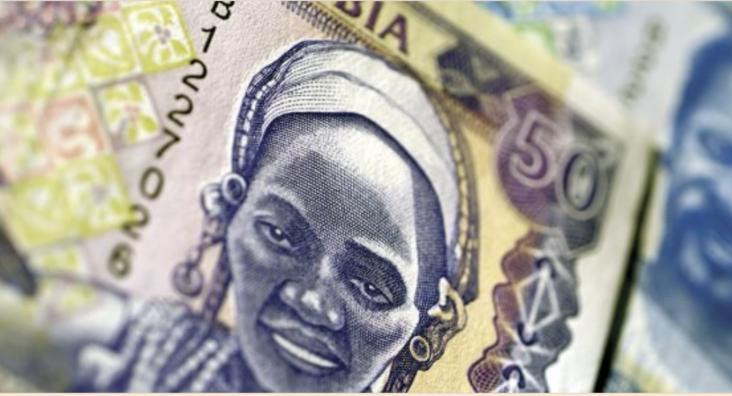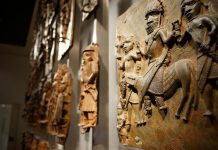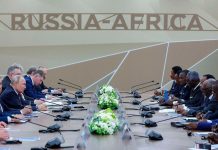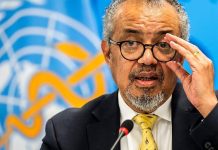Africa-Press – Mauritius. The largest allocation of Special Drawing Rights (SDRs) in history—about US$650 billion—comes into effect today. The allocation is a significant shot in the arm for the world and, if used wisely, a unique opportunity to combat this unprecedented crisis,” said Kristalina Georgieva, Managing Director of the International Monetary Fund (IMF) on 23 August.
With sub-Saharan Africa experiencing its first recession in 25 years in 2020, this economic tool, which was the focus of French President Emmanuel Macron’s summit on African economies on 17 May, could be used to help these seriously impaired economies.
Here are five things to know about SDRs: 1. Role of the SDR The SDR is an international reserve asset, created by the IMF in 1969 to supplement its member countries’ official reserves.
To date, a total of SDR 660.7 billion (equivalent to about US$943 billion) have been allocated. Today, allocations are used during economic crises to provide liquidity and to supplement the official reserves of member countries.
“The SDR is based on a basket of international currencies comprising the U. S. dollar, Japanese yen, euro, pound sterling and Chinese Renminbi.
It is not a currency, nor a claim on the IMF, but is potentially a claim on freely usable currencies of IMF members,” says the institution. In concrete terms, the primary use of the SDR is monetary.
It allows the consolidation of currency and ensures the reserves of the central banks. If a State decides to keep its SDRs, it will receive interest (the current interest rate is 0.05%).
SDRs can also be exchanged with another Central Bank for foreign currency. This mechanism allows a country to obtain money immediately to finance investment projects.
But if a country has less SDRs than it has been allocated, it will have to pay interest. This mechanism can also be seen as a reserve pooling mechanism.
For example, a country in need of hard currency can obtain it from another country that has plenty of it or can easily obtain it by borrowing. Most SDR trading is voluntary.
However, there is also a “designation mechanism” whereby the IMF can oblige certain members with strong reserves to accept SDRs from another member in exchange for currency.
But these SDRs cannot be exchanged directly with private companies or individuals. Their holding by private actors is prohibited. 2. Allocation SDRs are approved by the Board of Governors by a majority of 85% of the total votes.
“The IMF allocates SDRs to its members in proportion to their quotas, which reflect their relative economic positions in the world economy,” the institution explained.
Quotas are calculated according to these factors: GDP (50%), degree of openness of the economy (30%), economic fluctuations (15%) and official foreign exchange reserves (5%).
This means that rich countries receive more SDRs than poor countries. In fact, the US holds 16.5% of the quotas, China has 6% and South Africa – the continent’s largest contributor – has 0.63%.
Since its creation, five allocations have been approved for a total of SDR 661 billion (US$ 943 billion). The first, worth $9.3 billion, was issued in 1970, followed by another $12 billion between 1979 and 1981.
In 2009, a special one-off allocation allowed countries that joined the IMF after 1981 – the date of the previous allocation – to participate in the SDR system on an “equal footing”, the institution points out.
In the same year, to help countries cope with the 2008 global financial crisis, an allocation of $182 billion (SDR 161 billion) took place. The last – and by far the largest – allocation was approved on 2 August to help countries financially recover from the pandemic.
$650 billion will be allocated to IMF member states. The choice of this amount was not made at random.
While in theory there is no limit to the creation of SDRs, in practice there is a political constraint. With 17% of the votes in the IMF, the US has the power to block decisions. Above $680 billion, a general allocation must be approved by the US Congress.
The $650 billion was decided so as not to have to get the new approval amount through the US Congress, where opposition can delay any decision for months, especially as countries like Iran also receive SDRs.
3. Value of the SDR The value of the SDR was originally set at 0.89 grams of fine gold.
But since the collapse of the Bretton Woods system in 1971, the value of the SDR has been set against a basket of currencies, the composition of which is reviewed every five years.
Since 2015 – the next review has been postponed to 2022 – this basket is composed of 41.7% US dollars, 31% euros, 11% Chinese yuan, 8.3% Japanese yen and 8% pound sterling.
4. Reallocation to Africa
Under the quota system, African countries should receive a total of $33 billion of SDRs (out of the $650 billion), a “drop in the bucket”, according to Senegalese President Macky Sall. By comparison, the United States will receive $118 billion (SDR 83 billion). China, for its part, will be allocated $43 billion.
At the summit on the financing of African economies, the French president and African leaders called for the reallocation of 100 billion SDRs from the richest countries to African countries.
“France is ready for this, as is Portugal,” said Macron.
“We now need to convince others to make the same effort, especially the United States.
” However, the reallocation of SDRs is not so simple. It has to be done in the form of loans and depends on the Central Banks, which are subject to strict rules.
Projects, such as the IMF’s Poverty Reduction and Growth Trust, are being considered to facilitate reallocations. 5. Who holds SDRs? SDRs can be held by three entities: the IMF, member countries and 15 authorised holders such as central banks or development banks.
Among the approved African institutions are the African Development Bank (AfDB), the African Development Fund, the Bank of Central African States (BEAC), the Bank for International Settlements (BIS), the Central Bank of West African States (BCEAO) and the East African Development Bank (IADB). Other global institutions have also been approved.
These include the Latin American Reserve Fund (FLAR), the Arab Monetary Fund (AMF), the Asian Development Bank (ADB), the Central Bank of the Eastern Caribbean (BCCO), the International Bank for Reconstruction and Development (IBRD), the International Development Association (IDA), the International Fund for Agricultural Development (IFAD), the Islamic Development Bank (IDB) and the Nordic Investment Bank (NIB).
For More News And Analysis About Mauritius Follow Africa-Press







